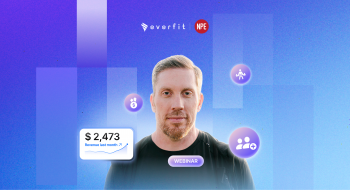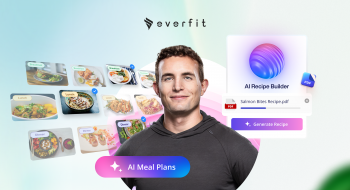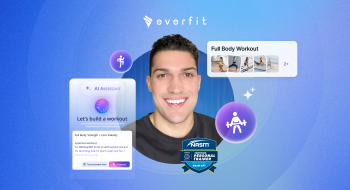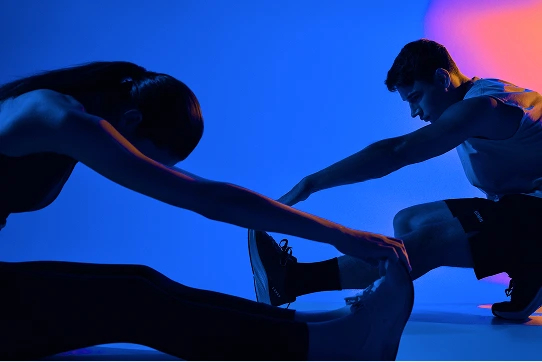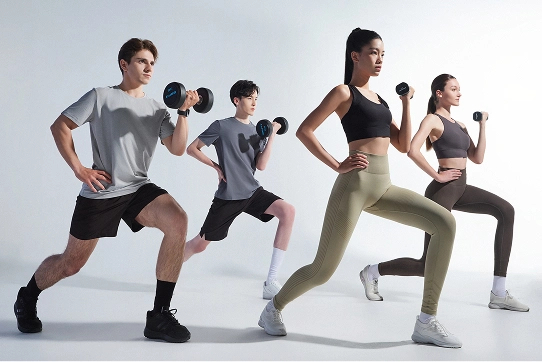Trevor Short is an exercise physiologist at the University of Hawaii, previous coach to NFL / Olympic athletes, & previous COO of a multi-million dollar training studios. Now he’s teaching you the essential concepts of designing a fitness program. You’ll learn how to perform a needs analysis & a comprehensive assessment, the foundational principle of designing a fitness program, and ancillary topics in exercise prescription. Learn the essentials of programming to the next level with these key considerations.
Transcript
All right. There are a lot of different set types that are included in the Everfit platform. Primarily there’s four so you have the warm up, also known as movement prep. So you can, you can allocate an exercise to be a warm up set. And that’ll let your client or individual know that this is just a warm up set. Or it’s also known as movement prep that might be for a bench press, for example, some push ups or something similar. Okay. The next set type that you have is a regular or working sets, working set, these are sets prescribed to elicit desired responses. So these are really those sets that you’re pre programming and allocating specific workloads to let’s say, 85% of 1RM, because you want to improve this individual’s strength. Something else that’s really common in the kinesiology realm is called a drop set. So a drop set is used to increase power output, and can cause neurological and psychological adaptations. So a drop set is basically when you build up to a heavyweight, so let’s say you’ve you’re building up or whatever weight it might be, in the following set, you drop weight from the bar, so you drop weight, let’s say you built up to a 500 pound back squat, and you’re going to drop this individual back down to 315, just three plates on the bar, what’s going to happen when that individual gets under the bar, basically, the nervous system and the physiology of the nervous system is going to assume that the same load relatively the same load is on the bar. So acetylcholine and calcium and all sorts of these chemicals that are involved in the central nervous system process and activation process, the nervous system are going to accumulate and be in that area that’s going to activate the muscle fibers in the legs. Basically, it’s going to be stoked, it’s going to be totally psyched. And what will happen when you pop the bar off, it’ll feel pretty light. When you get to the bottom of the squat and go to accelerate upward. Your neurological system is going to kind of kick into overdrive, and you’ll have a really, really powerful drive up from the bottom. So drop sets are used to increase power output. Drop sets are also used to increase volume in a training session. Because we know that an individual’s bar speed is directly associated to how many reps and reserve that they can do, aka in other words, as people are training, let’s say bench press to failure, the last couple sets, or last couple repetitions, they’re going to really slow down. And as the bar speed slows, that’s directly associated with how many reps in reserve that individual has left. So by doing a drop set, if you can increase the bar speed in the first couple repetitions, you might increase their volume also at that working load. Okay, so lots of reasonings and rationale behind using drop sets. But again, it’s just working up to a relatively heavier load, and then dropping the weight to get that feeling. And then the last set type is the failure set. So sets to failure, should, I think should be used sparingly and always require a spotter. However, they can be used for autoregulation and testing throughout program design. So failure sets shouldn’t, I don’t think should be something that are used all the time in every single training session, throughout all the sets. However, if you’re going to include one set to failure, let’s say they’re doing bench press, five sets of five, on the very last set, if you’re going to allow them to open up in what’s called a open set, do as many repetitions as you can, with the last prescribed weight, that will allow you to see their growth pattern and how much strength that they’re, they’re putting on right. And again, as we talked about being an educated coach practitioner, if you’re noticing that it’s been eight weeks, in a relatively untrained or moderately trained population, and they’re not getting a lot stronger, that’s when it’s time to really reconsider what type of training stimulus that they’re under, really consider the training load, how you’re testing your athletes and so on, to adapt on the fly and be sure to optimize the functional capacity improvements that you’re going to be delivering to your clientele.
Okay, and let’s also get into some other set types. So we’re in our ancillary topics in program design. So super sets, super sets are really, really popular. Superset essentially is two sequentially performed exercises that stress two opposing muscles or areas. Okay, so a superset is the agonist, the primary mover, okay, and the antagonists, so it’s a really, really easy way to think about this as a bicep and tricep doing a, let’s say, barbell bicep curl, and a cable tricep extension with a rope. Okay, doing them one after another is considered a superset, because you’re training the agonist primary mover and the antagonist the opposite. Okay? A compound set is when you prescribe two sequentially performed exercises that stress the same muscle group, something that I see this in, sometimes an easy way to think about this is, for example, we have two bicep heads or we have two hamstring heads, right, having different changes in the rotation of the arm forearm, or, or the femur, and lower limb can change the mechanics of which muscle is training. So for example, make it really simple. A compound set might be doing bicep curls, followed by a hammer curl, right? It’s the same muscle group, possibly different biomechanical load, okay, but you’re compounding on that same muscle group. That’s a compound set. And then we have giant sets, or quadruplex sets. So a giant set is usually a group of three or four exercises. And then quadruplex is really taken over in the functional training realm. But this is usually when you’re grouping four exercises combined into one circuit, circuit style training. And something that I do a lot with my athletes that are in this type of training program is an upper body, lower body, single leg balance and core exercise as a circuit. So let’s say for example, they’re doing an upper body again, to keep it really simple, just upper body bench press, lower body barbell squat, single leg balance, let’s say it’s doing some single leg RDL with airplanes opening up. And then Russian Twister course is something really simple. But you can circuit through these movements. And the good thing about thinking about giant sets or quadruplex training is that you can keep individuals really, really active without taxing and challenging the same muscle group. So you can tax somebody’s upper body, have them immediately walk over into a pre-set up lower body station, have them from that lower body go into an unloaded single leg balance type exercise, and then wrap up with core. By the time that they finish this entire circuit, right after they go through lower body, single leg and core, their upper body will most likely be almost recovered. So that way they can hop right into it. So this is really good for weight loss clients as well, to be able to get a lot of volume, or if you’re in a personal training setting when you’re doing sessions every 15 minutes, right, you only have 10 minutes on the hour, “How am I going to get into a big training stimulus?” So this type of circuit training giant sets or quadruplex training are really, really effective considerations as well.







